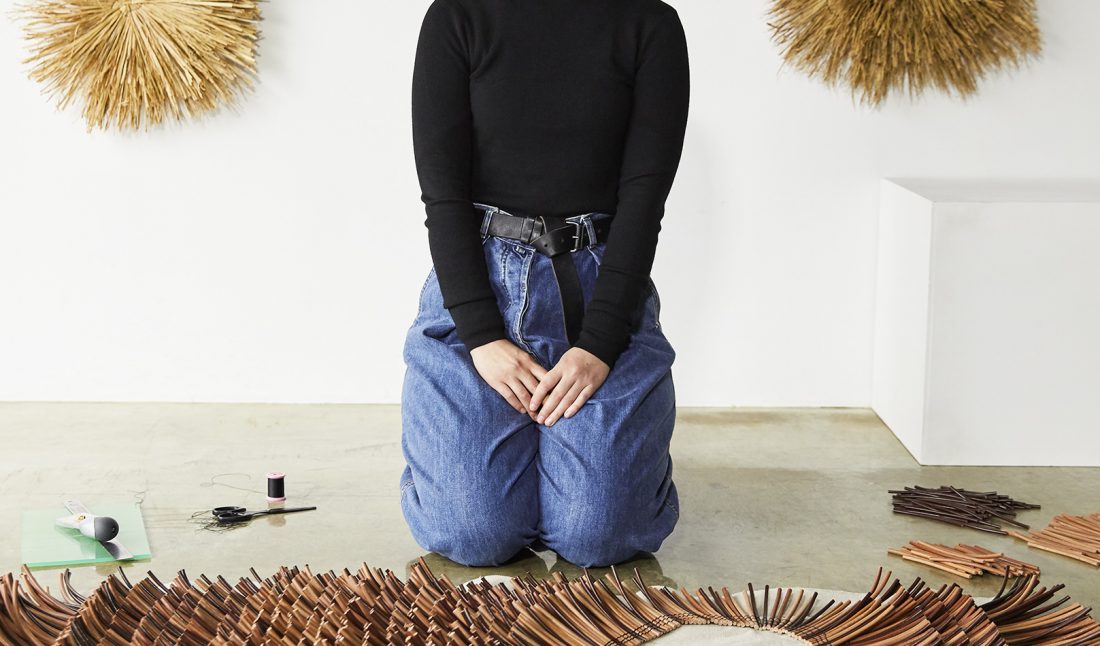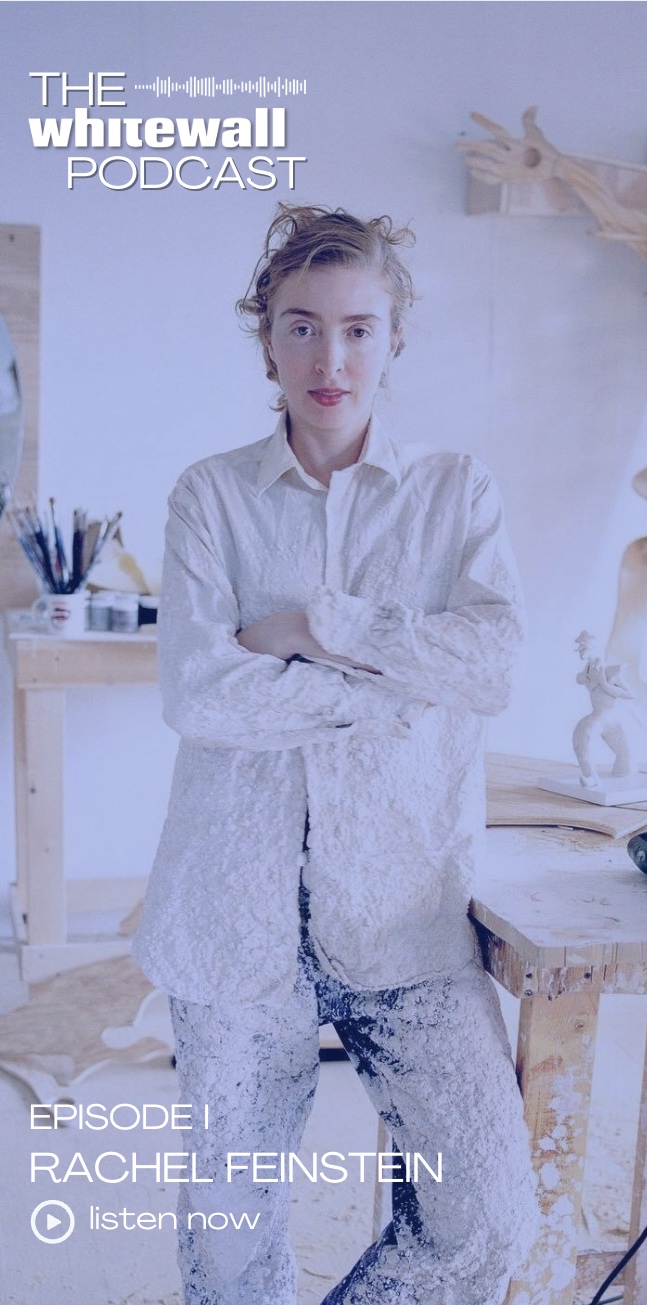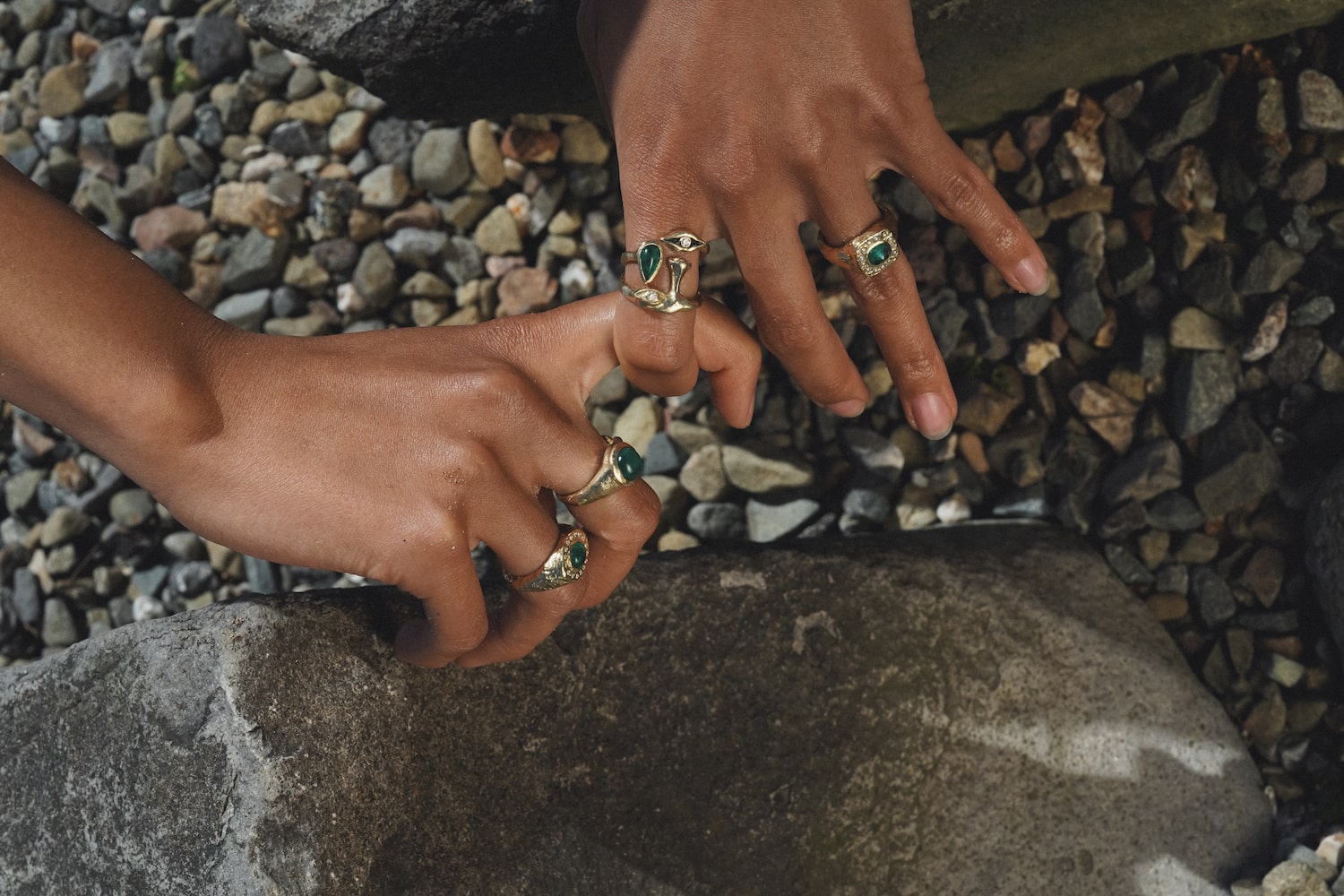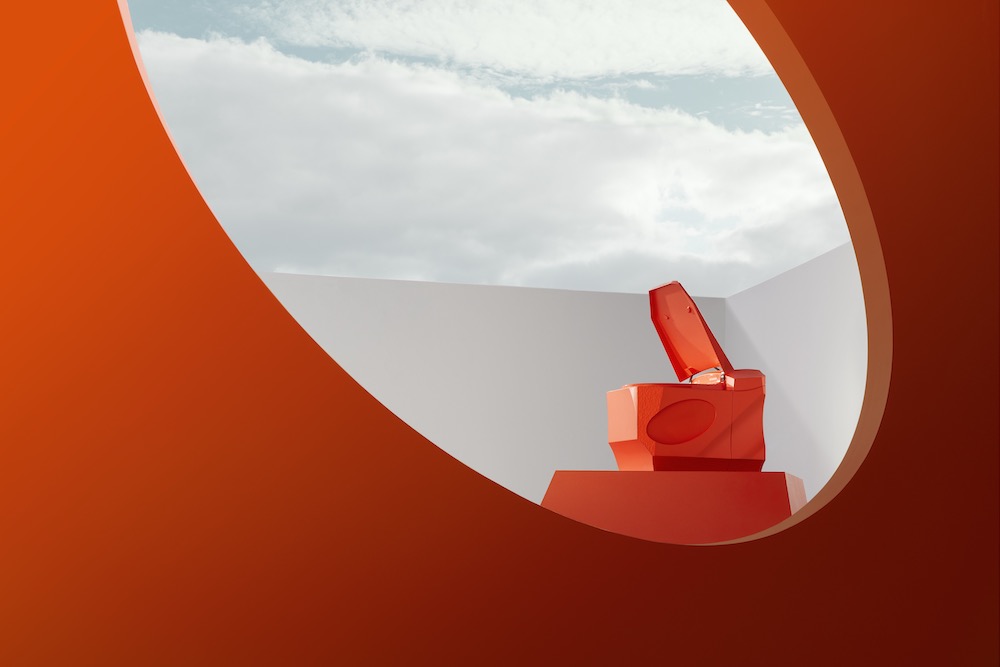For LOEWE’s fifth and most ambitious Salone presentation yet, the Spanish luxury house has invited both artists and artisans to participate. At the center of the presentation is the craft of weaving, and several artists, including Japan’s ARKO—who traditionally works in straw—were asked to explore the material of leather.
Whitewaller spoke to ARKO about her practice and her experience creating an exclusive objet d’art with LOEWE.
WHITEWALLER: Can you tell us about your artistic practice? What kind of pieces and objects are you drawn to making?
ARKO: I work with straw for my creations, and define myself as a straw artist. I only use rice straw. The Japanese have a very long history with rice.
Rice straw is a by-product of rice, and has been situated in the center of Japanese life for a long time. Until fifty or sixty years ago, rice straw was used in practical goods such as raincoats, sandals, bags, and so on. But now we don’t see any straw products in our home, so I started to make some new straw objects, with the purpose of looking back to our Japanese origins. Making these utility goods I mentioned above seemed to have no meaning for me. As no one uses such goods in contemporary times, and straw is already not functional, they are just decorative objects.
If that’s the case, I thought I should make new straw objects as a reminder of our roots or to stir our identity. So my work is just a symbol that makes us think about our relationship between our predecessors, both human and in nature, existing in our high-industrialized society.
WW: You were a finalist for the Loewe Craft Prize, and that piece you are re-creating in leather. Can you tell us about the inspiration behind the object?
A: I wanted to try to create the same pieces I do using rice straw. Even though the material changed, I was able to create the same object.
WW: What was it like working in leather for this project that will debut in Milan?
A: I had no idea I’d make my works in leather. When LOEWE proposed this to me, it seemed really interesting. Of course, I didn’t have any skills with working with leather at that time, and still do not now. This new experience was invaluable.
WW: What did you enjoy about working in leather?
A: Creating with an unknown material was so exciting, and I discovered new things. I learned that leather is alive in the same ways as rice straw. Depending on the temperature, leather can change to be curved or expanded. Japan is humid. We often say that it is not good conditions for leather. Therefore, the leather’s form might have changed in a particular way. It is fun for me to work expecting this change. Sometimes the leather betrayed me.
WW: What were some of the challenges?
A: I had to take another approach for leather. In the case of rice straw, I decide on a rough image and start sewing. I have no detailed plan; I just sew as it is. Sometimes each line is curved, or I cut and adjust the layer while seeing the progress. At first, all straw is different in thickness, color, and strength. I can’t control them perfectly as I imagine them. Since leather cords are hard, the overlapping sewing I wanted to do was difficult. Usually, overlapping makes straw work better in a line or form. At a certain point in my work, I sew over and over again to make it beautiful.
This time, I couldn’t do that. I went on according to the plan that I had decided at the start. There isn’t improvised creative essence.
WW: Was there anything about working with the material of leather you’ll take back to the studio?
A: By trying another material, I got to know the potential power of each material. Our impression of our work is seriously changed by material. This was a great lesson.












